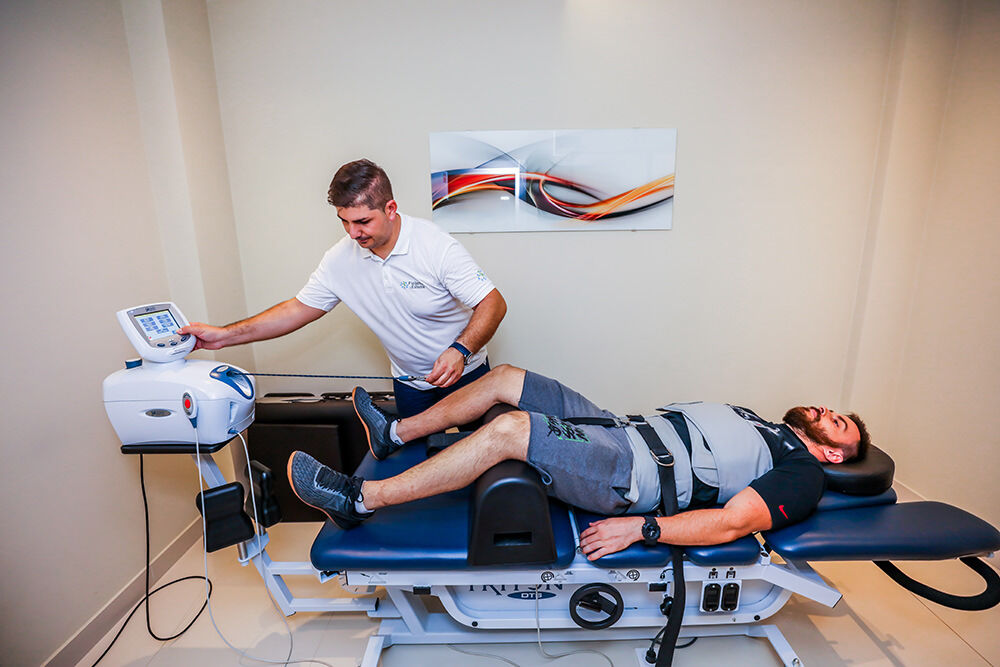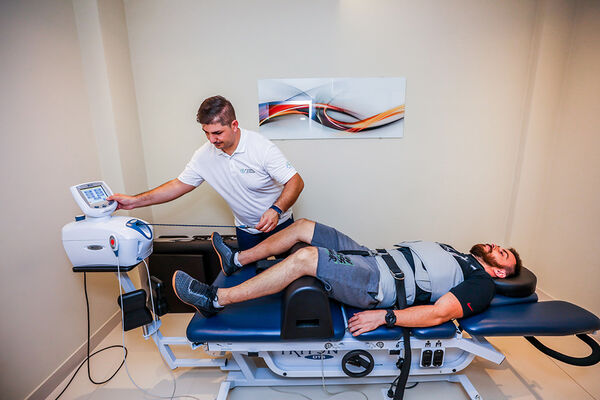What to do when you experience neck pain or lumbar spine pain
The spinal column enables a straight posture, head, neck and torso movement. Everyday activities performed improperly and during long stretches of time can lead to pain in the cervical or lumbar regions of the spinal column (lower back pain, lower back stiffness, herniation, etc.).
Long sitting at work or while driving, improper load lifting, sudden movements with spine bending and rotation, standing for long periods of time, bad position while sleeping, injuries of the bone, muscle and ligament systems, fatigue, spasms or muscle stretching or any other kind of imbalance can lead to changes in physiological position, so that the muscles, bones and joints are under stress. A consequence of all this are poor posture and biomechanics, and hence, neck and back pain that stretches out to other body parts.
The most common afflictions of the spinal column (back stiffness, lower back pain, back pain):
- Acute lumbar pain, spine pain which appears instantaneously from a sudden or improper load lifting. It leads to stiffness, or expands along one or both legs due to nerve compression.
- Spondylosis is a degenerative affliction, which leads to calcification of two or more adjacent vertebrae.
- Spondylolisthesis appears after trauma and represents a forward or anterior displacement of vertebrae over the vertebrae inferior to it.
- Spinal stenosis is a narrowing of the spinal canal due to degenerative and inflammatory processes in one or more discs
- Herniation (discus hernia) is a dislocation of an intervertebral disc with a tear in the annulus pulposus fibres and nucleus pulposus prolapse.
- Piriformis Syndrome is a muscular imbalance of the pelvic musculature that leads to movements in the hip joint and pelvis, which provokes the piriformis muscle that puts pressure (nerve compression) in the sciatic nerve (nervus ischiadicus) (buttock pain).
- Deformities in the shape of kyphosis, scoliosis, or lordosis.
- Acute cervical pain as a consequence of shoulder belt and neck muscle spasms. It appears with sudden or improper movement or overstress.
- Cervical Syndrome with symptoms of pain, palpatory sensitivity, spasms, limited neck and shoulder mobility.
- Cervical Brachial Syndrome has symptoms of neck pain and shoulder pain that expands down the arm and can lead to numbness in the fingers.
- Cervicocephalic syndrome is followed by a headache localized at the back of the head, expanding towards the top of the head.
- Vertebrobasilar insufficiency characterised by symptoms like dizziness, fainting, nausea, headache, ear buzzing.
Evaluation (assessment) of the condition
An individual examination performed by a doctor and chartered physiotherapist aimed at determining the cause of the affliction. By applying specialised diagnostic procedures along with anthropometric measurements (range of motion, extremities size, MMT), we can determine the cause of pain. The goal of the assessment is to reach a medical and physiotherapy diagnosis.
Physiotherapy diagnosis is a thorough report made by a specialist of physiotherapy with a detailed description determined through a previous evaluation.
An individual treatment and rehabilitation plan is created after formulating a diagnosis, depending on the type and degree of injury. The application of machine techniques alongside manual techniques ensures a full scope of rehabilitation aimed at maximising the effect of treatment.
Treatment plan and rehabilitation programme
Any injury or painful condition is treated individually. Treatment plans can depend on the time and cause of the condition.
In the acute stage with pain, a wide spectrum of machine techniques is applied ), like High intensity laser treatment (HILT), interference current, Transcutaneous electrical nerve stimulation (TENS) and Tecar machines . Specially designed pain relievment therapy through these machines has proven itself effective in alleviating pain in acute stages.
Traction or spinal decompression is the only non-surgical treatment effective in severe cases of herniation, and works by relieving the affected areas of pain. It enables the majority of patients to resume their daily activities, and also to return to work, as it is quick and effective. Traction is placed at the lumbar or neck spinal region, while lying on the back, stomach or side, depending on which position the patient finds most comfortable.
During the subacute and chronic stages, the main goal is to restore joint functionality through applying various manual techniques along with kinetic therapy and shock wave treatment .
One of the more significant manual techniques is the Mulligan concept , applied individually and often alongside kinetic taping and neuromuscular kinetic taping, by our certified chartered physiotherapist.



